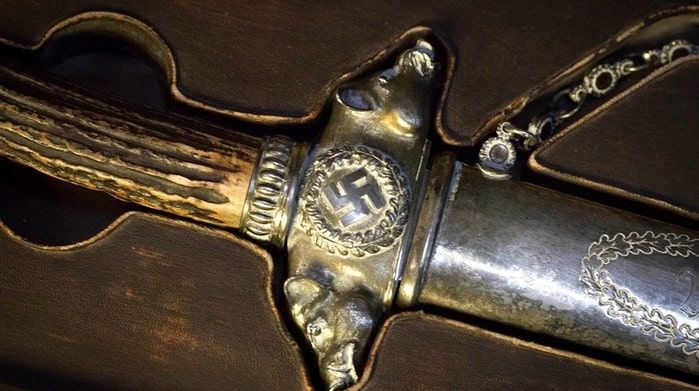Argentine police seize a surprising shipment of Nazi treasures
According to the local newspaper La Voz, the Anti-Terrorism Intelligence Division (DIA) of the Police confiscated a bust of Hitler, swastikas, and daggers with swastikas.

A bust of Hitler, daggers, and sabers with the swastika, with certificates of authenticity, are just some of the items confiscated by the authorities of the province of Cordoba, in the north of the South American country. The Cordoba Police, in the north of Argentina, kidnapped this Thursday an important shipment of objects with Nazi symbolism, after carrying out four raids in two different localities.
According to the local newspaper La Voz, the Anti-Terrorism Intelligence Division (DIA) of the Police confiscated a bust of Hitler, swastikas, and daggers with swastikas and certificates of authenticity, medals of soldiers, and dishes with engravings of the SS (Nazi security forces), among other items. "If the authenticity of all these elements is verified, we would be in the presence of objects of incalculable historical value," said the authorities at the end of the seizure proceedings. In 2017, the same Court that ordered the recent raids had requested another intervention in a third locality, where the troops found similar antiquities in a home.
Is Argentina a Nazi refuge?
There is a theory in the popular culture of the South American country that astonishes many historians: the arrival of Nazi hierarchs in search of a haven after the end of World War II in 1945. Some specialists say that long before the fall of the Third Reich, Argentina received more than 70,000 German immigrants. This antecedent becomes relevant in 1938 when at an event held in Buenos Aires, 15,000 people gathered to celebrate the annexation of Austria by Adolf Hitler's Germany. In March of this year, the news came out that the current government of the European country was sending paid pensions to 2,033 people, who performed functions within the bloodiest regime in history. Of the number of beneficiaries, it was indicated that 400 belonged to citizens who were in Latin America, 8 of them residing in Argentina.




